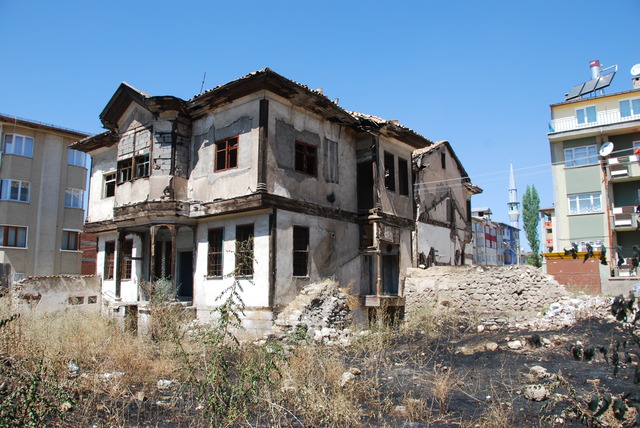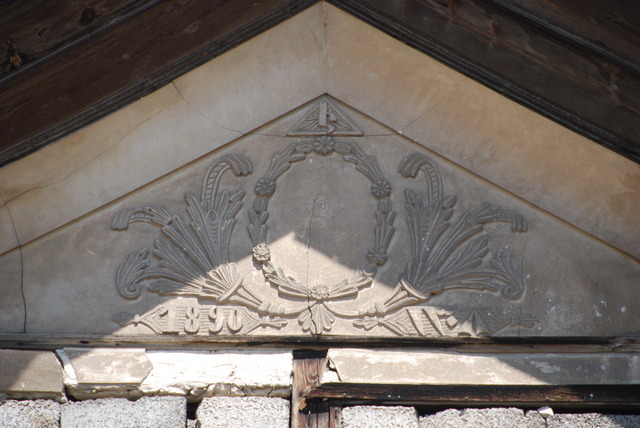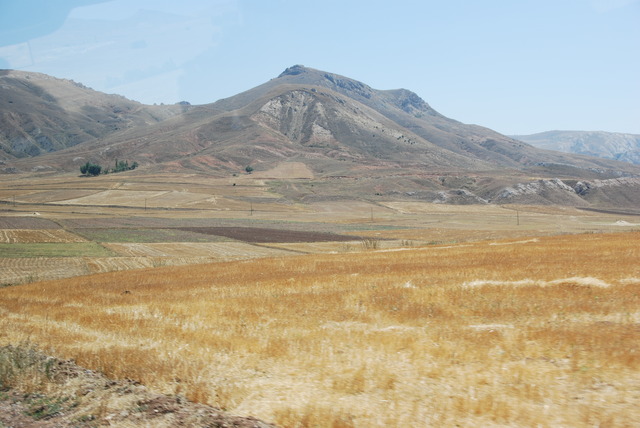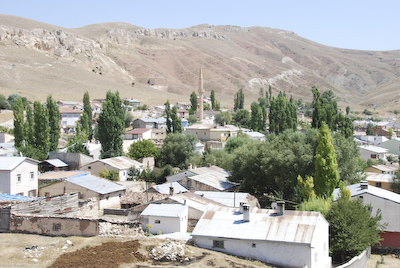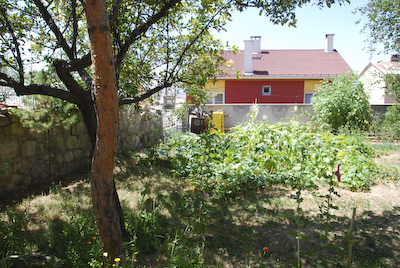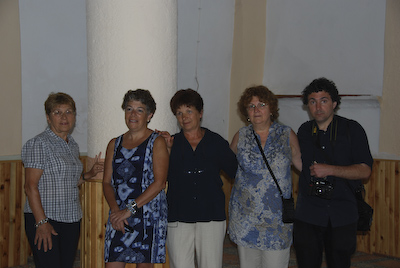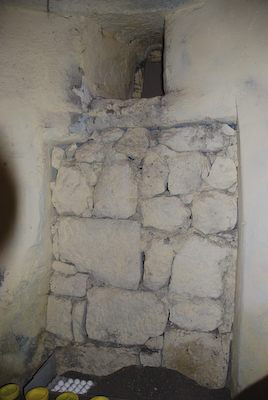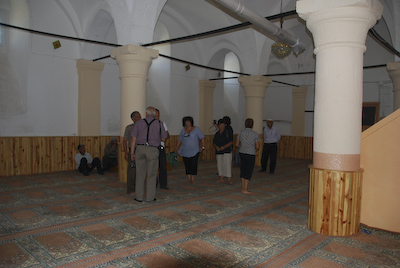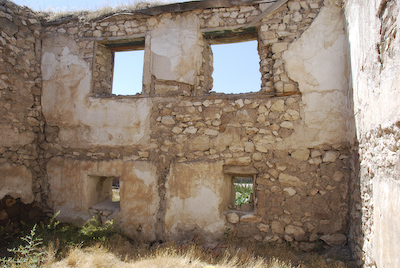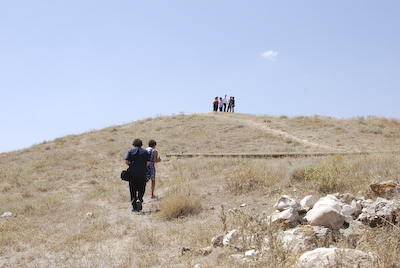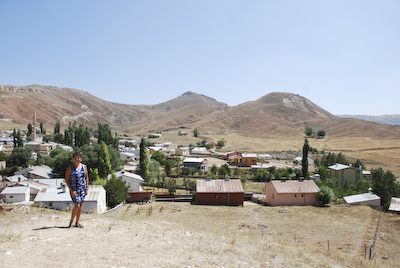We returned to Sivas and spent another night in the Sivas Buyok Otel. It is a clean and comfortable hotel which resembles a standard business hotel in any big city anywhere, and it has free WiFi in the room. It would be perfect, however the hotel has NO air conditioning and it was VERY hot outside. When we arrived late last night, it was a little cooler and I opened my window to let in a breeze.
It is currently Ramadan in the Islam world. The Turks call it ‘Ramazan’. During the month, the celebrants cannot eat or drink anything from sunrise to sunset. At 2:30 AM men ride around Sivas in cars or trucks banging huge drums to wake up the people so they can eat before the sunrise. The banging continues until about 3:00 AM. Then at 4:00 AM the ‘call to prayer’ is broadcast, load and clear, over the huge city amplifiers and it is time for the Muslims to stop eating for the day. Since my window was open, the sounds of the drum and the call to prayer were quite loud and I was able to enjoy all the dawn “music” of Sivas. Unfortunately, sleeping was out of the question.
 Urban Renewal and Armenian Architecture in Sivas
Urban Renewal and Armenian Architecture in Sivas
After breakfast, we boarded the van and drove to the old Armenian quarter of Sivas. All the Armenians are gone, but a few of their houses are still standing. Some houses have been renovated, and some are currently undergoing renovation, and others sit silently in a variety of states of ruin.
We stopped in front of a large, rather stately home that was in ruins. It had been a beautiful house built in the Armenian style of architecture, with Armenian letters and a date of 1890 decoratively carved in wood on the triangle under the roof. The house had been abandoned and neglected for a long time and it had been vandalized.
We climbed up the steps and looked into the first floor. When a police car slowly drove by looking at us, we assumed the neighbors called the police, we decided to leave the neighborhood.
We drove towards the village of Ishan which is only 5 kms from Sivas. Ishan means ‘prince’ in Armenian. This is the village of my maternal grandmother, Maritza Chahbazian. First we stopped at an arched Roman-style bridge which had been built in the 13th Century.
The Armenian inscriptions had been scraped off the stone plaque, but Arabic writing remained on another plaque on the opposite side of the river.
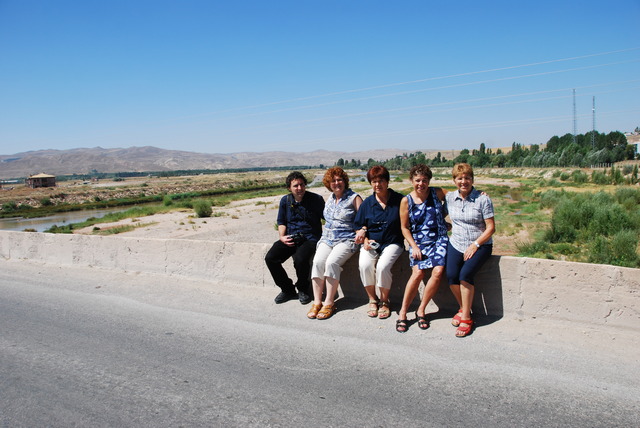 Descendants of the Chahbazians
Descendants of the Chahbazians
We drove onward to another smaller, similar bridge, which connected Sivas with Ishkhan. My cousin, Claudine, said that my grandmother and her sister and 3 brothers and parents walked across this bridge to go to Sivas, the big city. Claudine and Astrig said that the family frequently walked the 5 kms to go to the market or to go the the hamam for a Turkish Bath in Sivas.
Around the village of Ishan there were flat wheat fields and fertile farmland. Undulating hills gently rose behind Ishkhan. There were very few trees, the grass had turned brown from the heat of summer and the sun was strong and hot. The air was warm and dry and smelled like hay. Because of the altitude, this region receives a lot of snow in the winter.
We drove into Ishan slowly on the unpaved road and stopped above the mosque in the center of town. Five of us are descendants of Ishan. Claudine and Astrig’s father and mother, Nazareth and Ossana, were born and lived in Ishan. They had been neighbors and friends when they were young. My cousin Roseanne’s and my grandmother, Maritza, was Nazareth’s older sister. They had been a happy family with two more brothers, Levon and Haratoun and a sister, Margaret.
Their father was educated and had been the parish priest and an important man in the village. Many years ago, my grandmother told us that one of her greatest joys was watching their sheep on the hillside when she was young. Who knows how many generations of the Chahbazian family had lived in Ishkhan before the 1915 genocide. My grandmother’s parents were brutally killed by the Turks and my grandmother and her siblings were deported to an orphanage in Istanbul. After very difficult times, they eventually were able to escape Turkey and immigrated to the U.S and France. They built new lives but their happy family life, as it had been, was destroyed and the memories of seeing their parents and other relatives and friends killed, stayed with them for the rest of their lives.
We all walked down the hill toward the mosque. This had been the church of my Christian Armenian great-grandfather. The stone building was intact with a minaret attached to one corner.
There was a wall around the church and we passed through the gate and entered the garden.
Roseanne and I wondered aloud if Grandma’s mother had also planted flowers and tomatoes there. We removed our shoes, left them at the door and entered the mosque.
All the ancient churches were built of large heavy stones. The walls of the interior of the church rose to the high dome in the center of the ceiling. Large columns supported the dome and the roof. The interior space was unmistakeably Armenian architecture but all the frescos and wall paintings had been scraped off or covered with plaster and any reminder of Christianity had been removed.
We silently walked around and looked at what remained and touched the columns and walls. Claudine, Astrig thought about their parents, and Roseanne and I remembered our Grandmother Maritza.
Then Armen asked the Imam to open a door of what we thought was a closet. It turned out to be the area where the alter of the church had been and the original stones of the church wall were visible. The Imam used the area for storage. We walked into the space and Claudine took something out of her pocket. It was “Mas”, which is the small disc-shapped bread a priest gives to parishioners during Communion in an Armenian church service.
The Imam was watching us but we shielded Claudine from his view and she pushed the Mas into the space between two stones. Then we sang The Lord’s Prayer in Armenian in that alter-space where our great-grandparents and parents conducted Armenian services a hundred years ago.
When we emerged from the church, a neighbor had brought some fruits from her garden and left them for us. In a small bowl were ripe tomatoes and cucumbers. It was a kind, welcoming gesture. It’s interesting that Turkish men are ‘out and about’ and are present everywhere we go, but the women peek out of their windows or send their children to greet strangers and silently leave gifts.
Claudine and Astrig had visited Ishkhan five years earlier with Armen and another Armenian group. They said that the village had greatly improved and there were many new houses now. We walked around the mosque and tried to find my grandmother’s house.
We surmised that the parish priest’s house would be next door to the church, so we went around the new wall to look at the crumbling stone house next door. It was in a sad state with the roof caved in and no windows. But it was there: probably two stories, small windows to keep out the weather, another garden area, another structure for animals. Yes, we were grasping at straws. Who knows? It could have been our grandmother’s house or it could have been the house of a relative. We will never know……
Selcuk came to get us and we walked up a hill near the village which had been an Armenian cemetery. Large flat rocks marked the grave sites.
From the top of this hill we could see Sivas in the valley and the bridge my grandmother took to get there. You could also see the distant hills where my great-grandfather was killed by the Turkish military.
We could look down upon Ishan and see the entire village. In the other direction we could see the big city if Sivas in the distance. What a great place! A cooling breeze blew across the heat of the day and I wondered if my grandmother had ever come up to the top of this hill to look down on her world and to enjoy the view. It immediately became my favorite place! I wanted to sit on the ground and stay there all afternoon and enjoy the view of the village of Ishan…….

